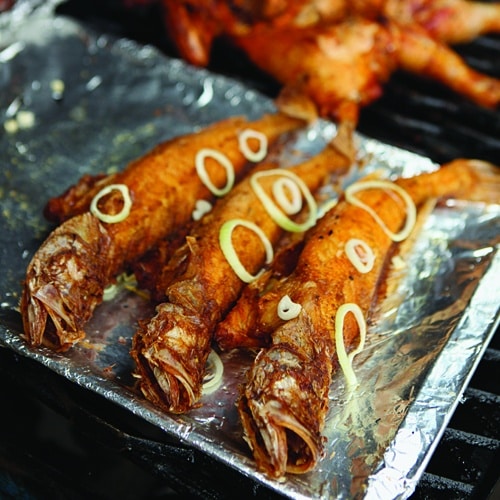Resort Review: Mocking Bird Hill, Jamaica
Mocking Bird Hill
Port Antonio, Jamaica
Frank Lumsden takes out his machete and hacks open a cassava root. White, starchy meat spills out. "My ancestors were escaped slaves called Maroons," he says. "They survived in the forest, eating what they could find. They used this stuff to make bammy." Frank sets down the remains of the root and tramps onward, up a steep jungle trail in Jamaica's Blue Mountains.
This excursion is part of Hotel Mocking Bird Hill's weeklong culinary adventure. It's half Daniel Boone, half Julia Child. One day I'm haggling over spiny Caribbean lobsters at the Manchioneal fish market; the next I'm chopping Scotch-bonnet peppers for a jerk marinade on the hotel terrace. I've discussed vegetarianism with a Rastafarian at Winnifred Beach, and watched the cooks at Lick 'Em Finger restaurant grill fish and sweet potatoes on ancient charcoal braziers. But right now I'm trying to stay in step with Frank toward an 18th-century coffee plantation. At a stream I sink onto a rock and guzzle electrolyte-spiked water.
Five minutes later Frank blows an abeng, a cow horn used by Maroon leaders to call the ancestors. Propelled by ancestral freedom fighters — and hunger — I rise and limp along on a bum knee. Frank stops and points out a pimento tree (allspice).
"The wood is still used to smoke jerked meats, a Maroon invention," he says. I'm salivating over a mental picture of spicy chicken from one of Jamaica's ubiquitous roadside shacks. Who knew jerk had such a heroic past? A week ago, all I cared about was the present — as in, satiating my island appetite by claiming a beach lounger. Then I saw the resort's offer to experience the real Jamaica. It involved food. I signed up.
Let's just say this is not the fenced-off and cruise-ship-mobbed Jamaica I'd expected. The island has a soul. It's found not in the display cases at the Charles Town Maroon Museum, but in the bammy bread and "run-down" vegetables served there, in a calabash-gourd bowl. With every bite I'm learning about Jamaica in ways that can't be done at the pool. During a Euro-Caribbean dinner at the hotel's Mille Fleurs restaurant, I hum over a salad with Greek-style feta that surely hails from Mount Olympus. "It's from Tamarind Farm, 15 kilometers away," resort co-owner Shireen Aga says. I take a moment to convince myself I'm still in Jamaica.
The next day, by taxi, we head up switchbacks to another coffee farm. By the time we arrive, I'm craving the world-famous Blue Mountain brew. Make that a steaming-hot cup. It's freezing up here, and I didn't pack a fleece. Inside the modest cottage headquarters of the family-owned Old Tavern Coffee Estate, Dorothy Twyman pours beans into the roaster. They crackle as the sugars in them caramelize. One pop and it's medium roast; two pops is medium-dark. Dorothy pours a ridiculously fresh cup of coffee. I warm my hands on the mug and sip. It's robust with tropical-fruit accents. I take no sugar or cream because I've developed a preference for the real Jamaica — strong, not too sweet, with just a hint of wild. This is how I will travel from now on: raw, with no preconceptions. And to think, I came here as a resort buff.
This article first appeared in Twenty of the World's Greatest Escapes, in the January/February 2012 issues of ISLANDS.
